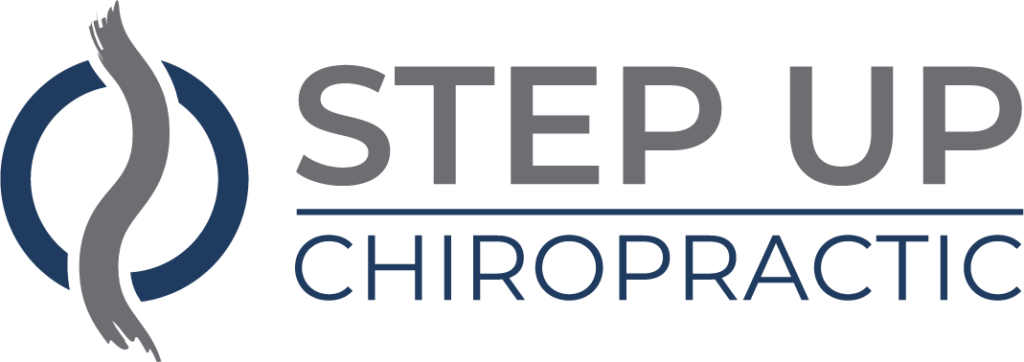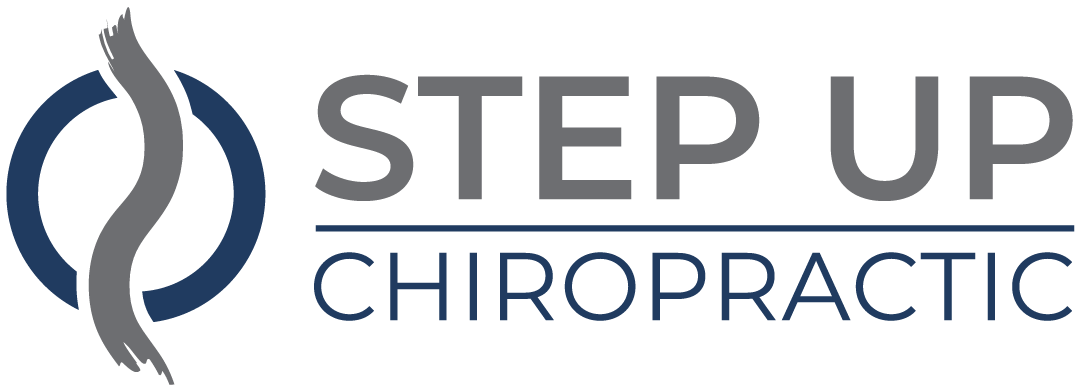If you're dealing with neck pain, you might find that Hawaii offers a unique blend of soothing techniques that cater to both body and mind. From gentle ocean-inspired stretches to the therapeutic warmth of volcanic stones, you have various options at your fingertips. You'll also discover how mindfulness practices can enhance your overall well-being and flexibility. But what if the answers to your neck pain relief are more accessible than you think, hidden in the island's natural rhythms?
Understanding Neck Pain Causes
When you experience neck pain, it's vital to understand the underlying causes to find effective relief. Neck pain can stem from various factors, and identifying the source can guide your treatment options. One common cause is muscle strain, often resulting from poor posture or prolonged screen time.
If you hunch over your computer or stare down at your phone for extended periods, you might be setting yourself up for discomfort.
Injuries, such as whiplash from a car accident or a fall, can also lead to significant neck pain. These injuries can damage the muscles and ligaments in your neck, causing inflammation and stiffness. It's important to address these injuries promptly to prevent long-term issues.
Another culprit could be degenerative conditions, like arthritis or herniated discs. As you age, the discs in your spine can wear down, leading to pain and reduced mobility.
These conditions often require a more thorough treatment approach, including medical intervention.
Infections or diseases affecting the cervical spine can also contribute to neck pain. While less common, conditions like meningitis or tumors can lead to severe symptoms that require immediate attention.
Finally, stress and tension can play a significant role in neck pain. When you're stressed, you might unconsciously tighten your neck muscles, leading to discomfort.
Recognizing these underlying causes can empower you to take proactive steps toward relief and improve your overall well-being.
Stretching Exercises for Relief
Identifying the causes of your neck pain is the first step toward finding relief, and incorporating stretching exercises can be highly beneficial. Stretching helps to alleviate tension, improve flexibility, and promote better posture, making it an essential part of your pain relief routine.
Start with neck tilts. Gently tilt your head toward your shoulder, holding the stretch for about 15-30 seconds. Switch sides and repeat. This exercise stretches the muscles on the sides of your neck, reducing tightness.
Next, try chin tucks. Sit or stand up straight and pull your chin in toward your chest, creating a double chin effect. Hold for 5 seconds, then relax. This exercise helps to strengthen your neck muscles and improve alignment.
Another effective stretch is the upper trapezius stretch. Sit comfortably, and reach your right arm down while tilting your head to the left. You should feel a gentle stretch along your neck and shoulder. Hold for 15-30 seconds, then switch sides.
Finally, consider shoulder rolls. Raise your shoulders toward your ears, roll them back, and then drop them down. Repeat this motion 10 times. This exercise releases tension in both your neck and shoulders.
Using Hot and Cold Therapy
When neck pain strikes, using hot and cold therapy can be a game changer.
Hot therapy helps relax muscles and improve blood flow, while cold therapy reduces inflammation and numbs sharp pain.
Combining both methods can enhance your relief and speed up recovery.
Benefits of Hot Therapy
Hot therapy can be a game-changer for relieving neck pain. When you apply heat, it increases blood flow and relaxes tense muscles, helping you feel better faster.
Here are three key benefits of using hot therapy for your neck pain:
- Muscle Relaxation: Heat soothes tight muscles and reduces stiffness. You'll notice a significant difference as your neck loosens up, allowing for easier movement.
- Pain Reduction: Warmth can block pain signals sent to your brain, giving you much-needed relief. You'll find that hot therapy acts as a natural analgesic, making daily activities more manageable.
- Enhanced Flexibility: By improving circulation and loosening the muscles, heat therapy helps increase your neck's range of motion. You'll be able to turn your head without discomfort, making it easier to engage in your favorite activities.
Incorporating hot therapy into your routine can be simple. Whether you use a heated towel, a hot water bottle, or a heating pad, you'll likely find comfort and relief.
Remember to listen to your body and use heat therapy safely to maximize its benefits.
Cold Therapy Techniques
While hot therapy offers significant benefits for neck pain relief, incorporating cold therapy can enhance your overall recovery process. Cold therapy, also known as cryotherapy, helps reduce inflammation and numb the pain in your neck. You can easily apply it through various methods, such as ice packs, gel packs, or even a bag of frozen vegetables wrapped in a towel.
To effectively use cold therapy, start by applying the cold source to the affected area for about 15 to 20 minutes at a time. Make sure to give your skin a break between applications to avoid frostbite. You should repeat this process several times a day, especially within the first 48 hours after experiencing neck pain.
If you're on the go, consider using a cold therapy wrap that conforms to your neck's shape, allowing for comfort and effective relief.
Always listen to your body; if you feel excessive discomfort, remove the cold source immediately. By integrating cold therapy into your routine, you'll not only alleviate pain but also promote healing in your neck, making it an essential part of your recovery toolkit.
Combining Both Methods
Using both hot and cold therapy can greatly enhance your neck pain relief efforts. This combination helps to reduce inflammation while also promoting blood flow, giving you a more thorough approach to managing discomfort.
Here's how you can effectively combine these methods:
- Start with Cold Therapy: Apply an ice pack to the affected area for 15-20 minutes. This helps numb the pain and reduce swelling, making it easier to manage discomfort.
- Switch to Heat Therapy: After the cold treatment, wait an hour, then apply a heat pack or a warm towel to the neck for another 15-20 minutes. Heat promotes circulation, relaxes tight muscles, and eases tension.
- Alternate as Needed: You can repeat these steps throughout the day, allowing your neck to experience both the numbing effect of cold and the soothing warmth of heat.
Just be sure to listen to your body and adjust the timing based on how you feel.
Massage Techniques to Try
When you're dealing with neck pain, massage can be a game changer.
You might want to explore Swedish massage for relaxation, deep tissue techniques for targeted relief, or even self-massage methods you can do at home.
Each of these options offers unique benefits that can help ease your discomfort and improve mobility.
Swedish Massage Benefits
If you're looking for effective ways to relieve neck pain, Swedish massage might be just what you need. This popular technique focuses on long, flowing strokes that promote relaxation and reduce tension in your muscles.
Here are three key benefits of Swedish massage for neck pain relief:
- Improved Blood Circulation: The gentle movements increase blood flow to the affected areas, delivering essential nutrients and oxygen. This can help speed up recovery and alleviate pain.
- Muscle Relaxation: The rhythmic strokes target tight muscles, helping them relax and release built-up tension. This is especially beneficial if you've been holding stress in your neck and shoulders.
- Enhanced Flexibility: Regular Swedish massage can improve your range of motion. As your neck muscles relax, you'll find it easier to turn your head and perform everyday activities without discomfort.
Incorporating Swedish massage into your wellness routine not only addresses immediate pain but also fosters long-term muscle health.
Deep Tissue Techniques
Deep tissue massage techniques offer a powerful solution for relieving stubborn neck pain. These techniques focus on the deeper layers of muscle and connective tissue, targeting the knots and tension that often contribute to discomfort.
When you book a session, your therapist will use slow, deliberate strokes and deep pressure to reach these layers effectively. You can expect the therapist to work on areas around your neck, shoulders, and upper back. They might use their fingers, elbows, or forearms to apply the necessary pressure.
While it can feel intense, the goal is to release tightness and improve blood flow, ultimately reducing pain. Communication is key; don't hesitate to tell your therapist if you need more or less pressure.
After your session, you might feel some soreness, but this usually subsides within a day or two, leaving you feeling looser and more relaxed. Incorporating deep tissue massage into your routine can greatly enhance your neck pain relief efforts, especially if you're dealing with chronic discomfort.
Regular sessions can help maintain flexibility and reduce the likelihood of future tension.
Self-Massage Methods
While professional massage can be incredibly beneficial, self-massage methods can provide immediate relief for neck pain whenever you need it. You don't need special tools or extensive training—just your hands and a few techniques to ease tension.
Here are three effective self-massage methods you can try:
- Kneading: Use your fingers to gently knead the muscles on the sides of your neck. Start at the base of your skull and work your way down toward your shoulders. Apply firm pressure in a circular motion to help release tight spots.
- Pressure Points: Find the tender spots at the base of your skull and apply steady pressure with your thumb or fingers. Hold the pressure for 15-30 seconds, then release. This can help alleviate headaches and neck discomfort.
- Rolling: Use a tennis ball or a similar object. Place it between your neck and a wall, and gently roll it around to target tight areas. This technique can help break up knots and improve circulation.
Mindfulness and Relaxation Methods
Many people find that incorporating mindfulness and relaxation techniques into their daily routine can greatly alleviate neck pain. By focusing on the present moment, you can reduce stress and tension that often exacerbate discomfort.
Start by setting aside a few minutes each day to practice mindful breathing. Find a quiet space, sit comfortably, and close your eyes. Take deep breaths in through your nose, allowing your abdomen to rise, then exhale slowly through your mouth. This simple practice helps calm your mind and release tension in the neck and shoulders.
Another effective technique is progressive muscle relaxation. As you breathe deeply, systematically tense and then relax each muscle group, starting from your toes and working your way up to your neck and shoulders. This can help you become more aware of where you're holding tension and provide relief.
In addition, consider incorporating gentle yoga or stretching routines into your day. Poses like Child's Pose and Cat-Cow can enhance flexibility and alleviate stiffness. Focus on your breath as you move, which can enhance your sense of relaxation.
Finally, don't underestimate the power of guided meditation. Many apps and online resources offer sessions specifically designed for pain relief. These meditations can help you cultivate a deeper sense of relaxation, allowing your body to release tension naturally.
Ergonomic Adjustments for Comfort
Making ergonomic adjustments in your workspace can greatly enhance your comfort and reduce neck pain. By fine-tuning your environment, you can create a setup that supports your body and promotes good posture.
Here are three key adjustments you should consider:
1. Monitor Height: Position your computer monitor so that the top of the screen is at or just below eye level. This way, you won't have to tilt your head up or down, which can strain your neck.
Make sure to sit about an arm's length away from the screen for ideal viewing.
2. Chair Support: Invest in a chair that provides good lumbar support. Adjust the height so your feet rest flat on the floor and your knees are at or slightly below hip level.
A chair with adjustable armrests can also help keep your shoulders relaxed and your arms at a comfortable angle.
3. Keyboard and Mouse Placement: Keep your keyboard and mouse close enough to avoid reaching. Your elbows should be at a 90-degree angle or slightly obtuse, and your wrists should remain straight while typing.
Consider using a wrist rest to keep your hands in a neutral position.
Natural Remedies and Supplements
If you're looking for effective ways to alleviate neck pain, natural remedies and supplements can be a great addition to your routine. You might want to start with turmeric, known for its anti-inflammatory properties. Adding turmeric to your diet or taking it as a supplement could help reduce pain and swelling in your neck.
Another option is ginger, which has similar benefits. You can drink ginger tea or take ginger supplements to combat inflammation.
Additionally, omega-3 fatty acids, found in fish oil, are excellent for reducing pain and stiffness. Incorporating fatty fish like salmon into your meals can offer this benefit, or you can choose a quality fish oil supplement.
Don't overlook the power of magnesium. This mineral helps relax muscles and can ease tension in your neck. Foods rich in magnesium include leafy greens, nuts, and seeds. You might also consider taking a magnesium supplement if you're not getting enough from your diet.
Essential oils can provide relief as well. Peppermint and eucalyptus oils are known for their soothing effects. You can dilute them with a carrier oil and massage them into your neck or use a diffuser to enjoy their aromatic benefits.
Lastly, staying hydrated is vital. Dehydration can exacerbate muscle cramps and tension. Aim to drink plenty of water throughout the day to help keep your muscles functioning efficiently.
Incorporating Yoga Practices
Incorporating yoga practices into your routine can greatly enhance neck pain relief. Yoga not only promotes relaxation but also strengthens the muscles supporting your neck. By focusing on gentle stretches and mindful movements, you can alleviate tension and improve your overall posture.
Here are three effective yoga practices to ponder:
- Cat-Cow Stretch: This dynamic movement helps to warm up your spine and relieve tension in your neck. Start on all fours, then alternate between arching your back (Cat) and dropping your belly while lifting your head (Cow). Repeat several times, syncing your breath with each movement.
- Child's Pose: This restorative pose encourages deep relaxation. Kneel on the floor, sit back on your heels, and stretch your arms forward while lowering your chest towards the ground. Feel the gentle stretch in your neck and shoulders as you breathe deeply, allowing your body to release built-up tension.
- Neck Rolls: To specifically target neck tightness, gently drop your chin to your chest and roll your head in a circular motion. Do this slowly, moving in both directions. This simple exercise can greatly reduce stiffness and improve flexibility in your neck.
Seeking Professional Help
Sometimes, seeking professional help is essential for effectively managing neck pain. While self-care techniques like yoga and stretching can provide relief, chronic or severe neck pain often needs a trained expert's attention.
A healthcare provider can help you identify the underlying cause of your discomfort, whether it's poor posture, an injury, or a medical condition.
When you consult a professional, they'll likely conduct a thorough assessment, which may involve physical examinations and imaging tests. This process helps pinpoint any structural issues or injuries contributing to your pain.
Based on their findings, they'll develop a tailored treatment plan that may include physical therapy, medication, or even alternative therapies like acupuncture or chiropractic care.
Don't hesitate to reach out to a specialist if your pain persists or worsens. An experienced physical therapist can guide you through exercises designed to strengthen your neck and improve flexibility, while a chiropractor may provide adjustments to realign your spine.
If your neck pain is related to a medical condition, your doctor might refer you to a specialist who can offer targeted treatments.
Conclusion
Incorporating these soothing techniques for neck pain relief can make a significant difference in your comfort and well-being. By blending traditional Hawaiian practices with modern therapies, you can create a holistic approach to managing your neck pain. Remember to listen to your body and explore different methods, from gentle stretches to mindfulness practices. If pain persists, don't hesitate to seek professional help. Embrace the tranquility of Hawaii and nurture your body back to health.




